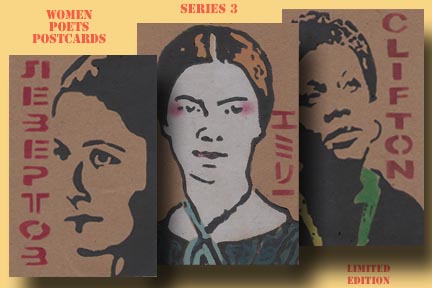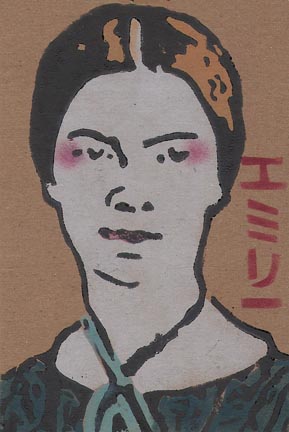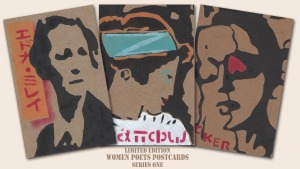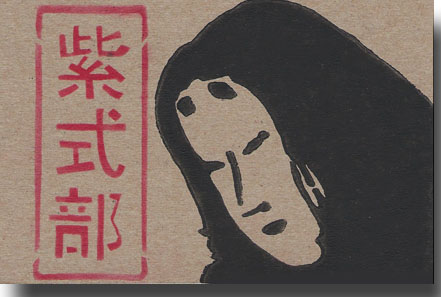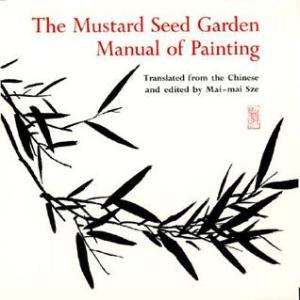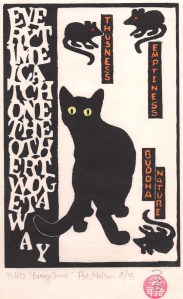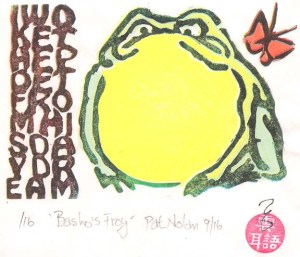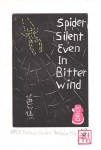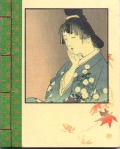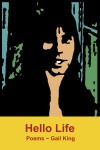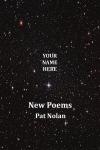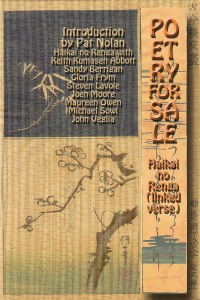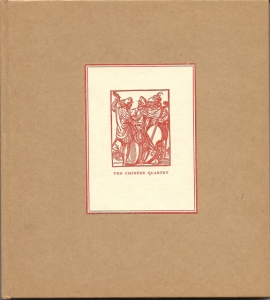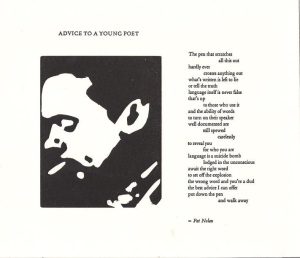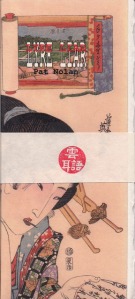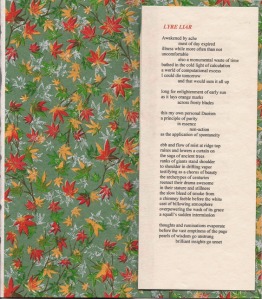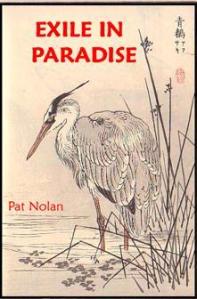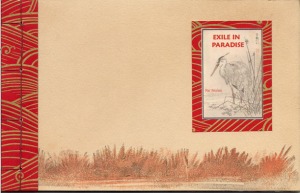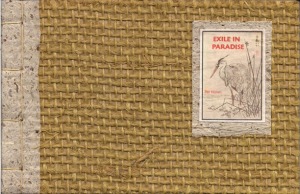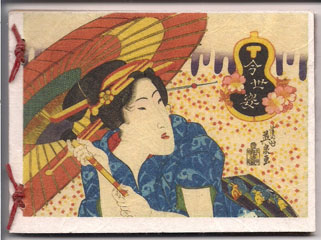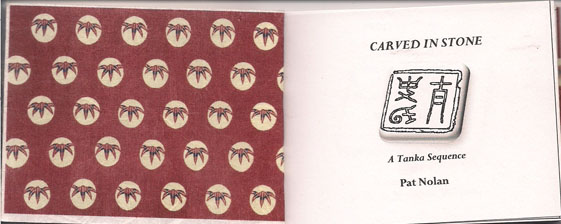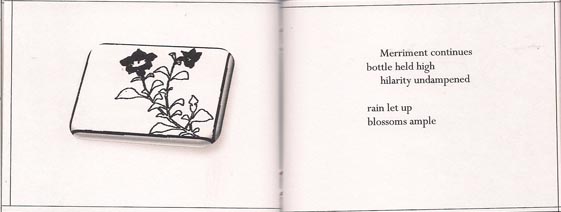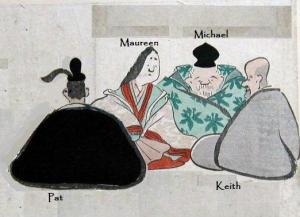2021 marks ten years since Nualláin House, Publishers, began print on demand publishing of “literature as reading entertainment” utilizing readily available digital technology and desktop design options, essentially a case of authors seizing the means of production. Over that time Nualláin House has published two genre novels (crime fiction and western), an anthology of Japanese linked verse, and six selections of poetry. Because technology changes the way one does business, Nualláin House has slowly shifted emphasis away from the production of bound volumes of poetry and fiction to the wider readership access provided by the internet. Digital media in the form of blogs and websites provide an entry for the independent artist and writer to launch shoestring operations that do not demand much more than time, determination, and a little imagination to produce and promote their work. After a decade of slogging up the steep cyber learning curve, Nualláin House, Publishers, a publishing project that focused on printed media, has had to widen its scope of what can be accomplished in the production and promotion of literary arts. To that end, along with a new easier to read WordPress theme, Nualláin House has incorporated two fresh projects available through the site’s menu bar to reflect its expanded emphasis: Affiliated Sites and Bamboo Leaf Studio. As before, synopses and approbation of previously published titles can also be accessed from the menu bar as can contact information and ordering print editions
Affiliated Sites
 The New Black Bart Poetry Society blog, Parole, was launched in 2012 and was originally conceived as a calendar and events reminder for the poetry society. As the successor to Life of Crime, a more scurrilous Society rag from the 80s, Parole continues the focus on poetry, poets, and the poetry scene. It has a worldwide readership which has grown from a couple of hundred readers a month to thousands who now enjoy its unique perspectives on modern poetry.
The New Black Bart Poetry Society blog, Parole, was launched in 2012 and was originally conceived as a calendar and events reminder for the poetry society. As the successor to Life of Crime, a more scurrilous Society rag from the 80s, Parole continues the focus on poetry, poets, and the poetry scene. It has a worldwide readership which has grown from a couple of hundred readers a month to thousands who now enjoy its unique perspectives on modern poetry.
 Ode To Sunset, A Year In The Life Of American Genius, a fiction by Pat Nolan, was in the works several years before Nualláin House, Publishers, came into being. As work on Ode To Sunset was occurring in parallel, the publishing tools available through the internet offered the opportunity to take a creative leap into the online publishing of the manuscript as a serial novel. At over 600 manuscript pages, the challenge then became one of presentation over a sustained period of time. The novel was posted over two years, 2014-2016, with yearly updates and progress reports since then.
Ode To Sunset, A Year In The Life Of American Genius, a fiction by Pat Nolan, was in the works several years before Nualláin House, Publishers, came into being. As work on Ode To Sunset was occurring in parallel, the publishing tools available through the internet offered the opportunity to take a creative leap into the online publishing of the manuscript as a serial novel. At over 600 manuscript pages, the challenge then became one of presentation over a sustained period of time. The novel was posted over two years, 2014-2016, with yearly updates and progress reports since then.
 Joining these two affiliated sites is Dime Pulp, A Serial Fiction Magazine. Nualláin House’s original concept of publishing literature as reading entertainment is being revisited with a new undertaking in the form of a serial fiction magazine posting original crime fiction on a monthly schedule. Dime Pulp has already published its first issues featuring two original novels in serialization as well as short stories with more original genre fiction in the queue.
Joining these two affiliated sites is Dime Pulp, A Serial Fiction Magazine. Nualláin House’s original concept of publishing literature as reading entertainment is being revisited with a new undertaking in the form of a serial fiction magazine posting original crime fiction on a monthly schedule. Dime Pulp has already published its first issues featuring two original novels in serialization as well as short stories with more original genre fiction in the queue.
For the curious wishing to access the aforementioned sites, click on Affiliated Sites here or on the menu bar and follow the links
Bamboo Leaf Studio
 Bamboo Leaf Studio is an independent art enterprise by poet Pat Nolan featuring his limited edition handmade books, linoleum prints, and studio based literary ephemera. The studio page provides links to four gallery pages of representative work: Faux Koans, Smoking Poets, Women Poet Postcards, and Handmade Books & Surimono. Click on Bamboo Leaf Studio here or on the menu bar to access the links to the galleries below the brief introduction.
Bamboo Leaf Studio is an independent art enterprise by poet Pat Nolan featuring his limited edition handmade books, linoleum prints, and studio based literary ephemera. The studio page provides links to four gallery pages of representative work: Faux Koans, Smoking Poets, Women Poet Postcards, and Handmade Books & Surimono. Click on Bamboo Leaf Studio here or on the menu bar to access the links to the galleries below the brief introduction.
What’s Next?
 The events of the past year have presented an opportunity to reassess the expectations for Nualláin House as a publishing arts venture. Although the emphasis on hard copy production is no longer in the forefront, Nualláin House, Publishers, is reviewing its catalog and considering at least one more print on demand edition of creative non-fiction. As well, work is in progress to bring a new serial novel online, in addition to the ones featured in Dime Pulp. Poetry will continue to be a focus but as online chapbooks downloadable in pdf or ebook formats. Bamboo Leaf Studio with new Smoking Poets prints and assorted literary art ephemera continues to be a crucible of creativity in its unique synthesis of art and literature. With the exception of the books, prints, and some ephemera, all of these literary products are available without charge to the interested reader. Many thanks to those who have faithfully followed Nualláin House, Publishers, over the years. There’s always something new on the creative horizon.
The events of the past year have presented an opportunity to reassess the expectations for Nualláin House as a publishing arts venture. Although the emphasis on hard copy production is no longer in the forefront, Nualláin House, Publishers, is reviewing its catalog and considering at least one more print on demand edition of creative non-fiction. As well, work is in progress to bring a new serial novel online, in addition to the ones featured in Dime Pulp. Poetry will continue to be a focus but as online chapbooks downloadable in pdf or ebook formats. Bamboo Leaf Studio with new Smoking Poets prints and assorted literary art ephemera continues to be a crucible of creativity in its unique synthesis of art and literature. With the exception of the books, prints, and some ephemera, all of these literary products are available without charge to the interested reader. Many thanks to those who have faithfully followed Nualláin House, Publishers, over the years. There’s always something new on the creative horizon.

